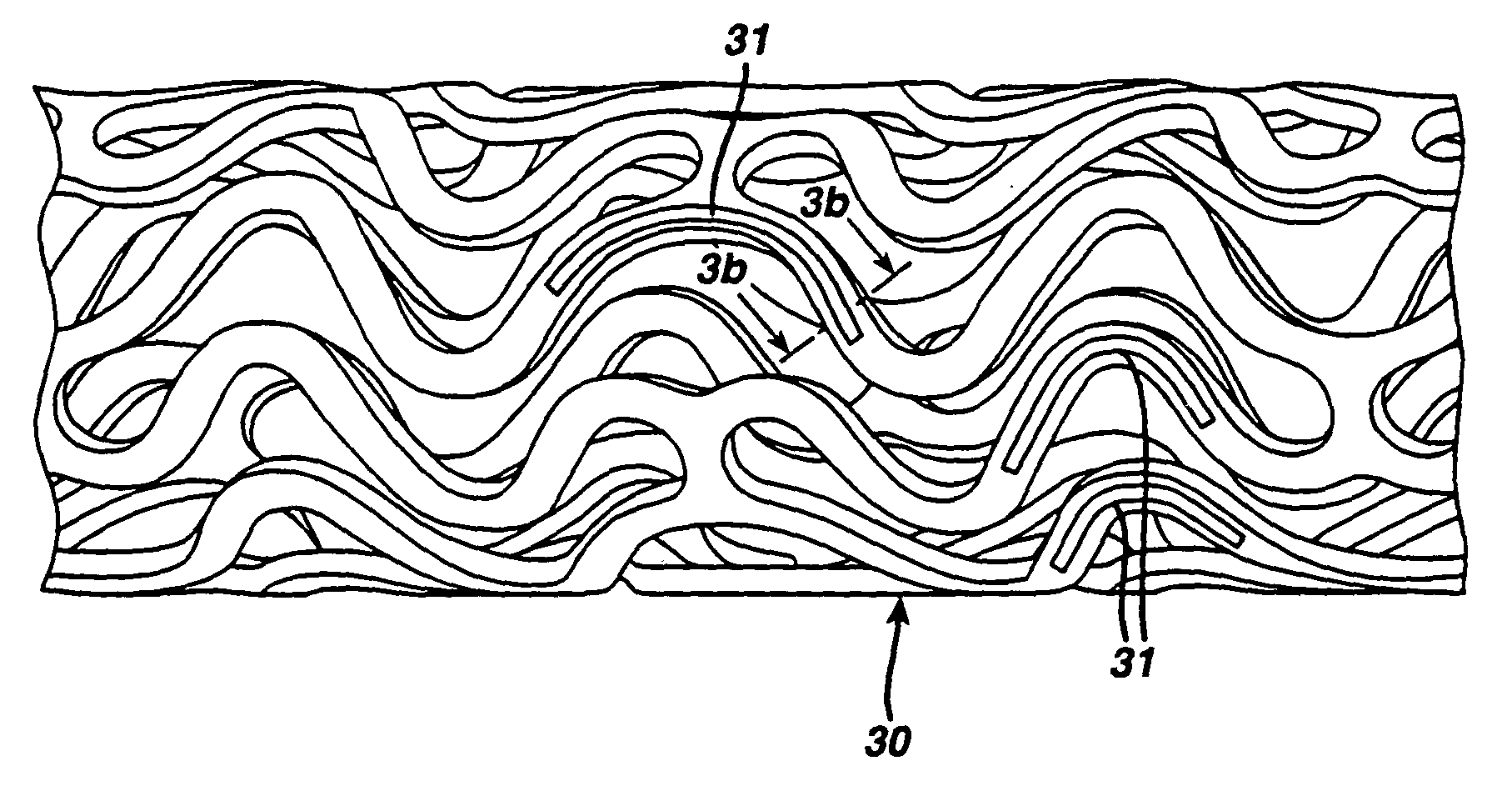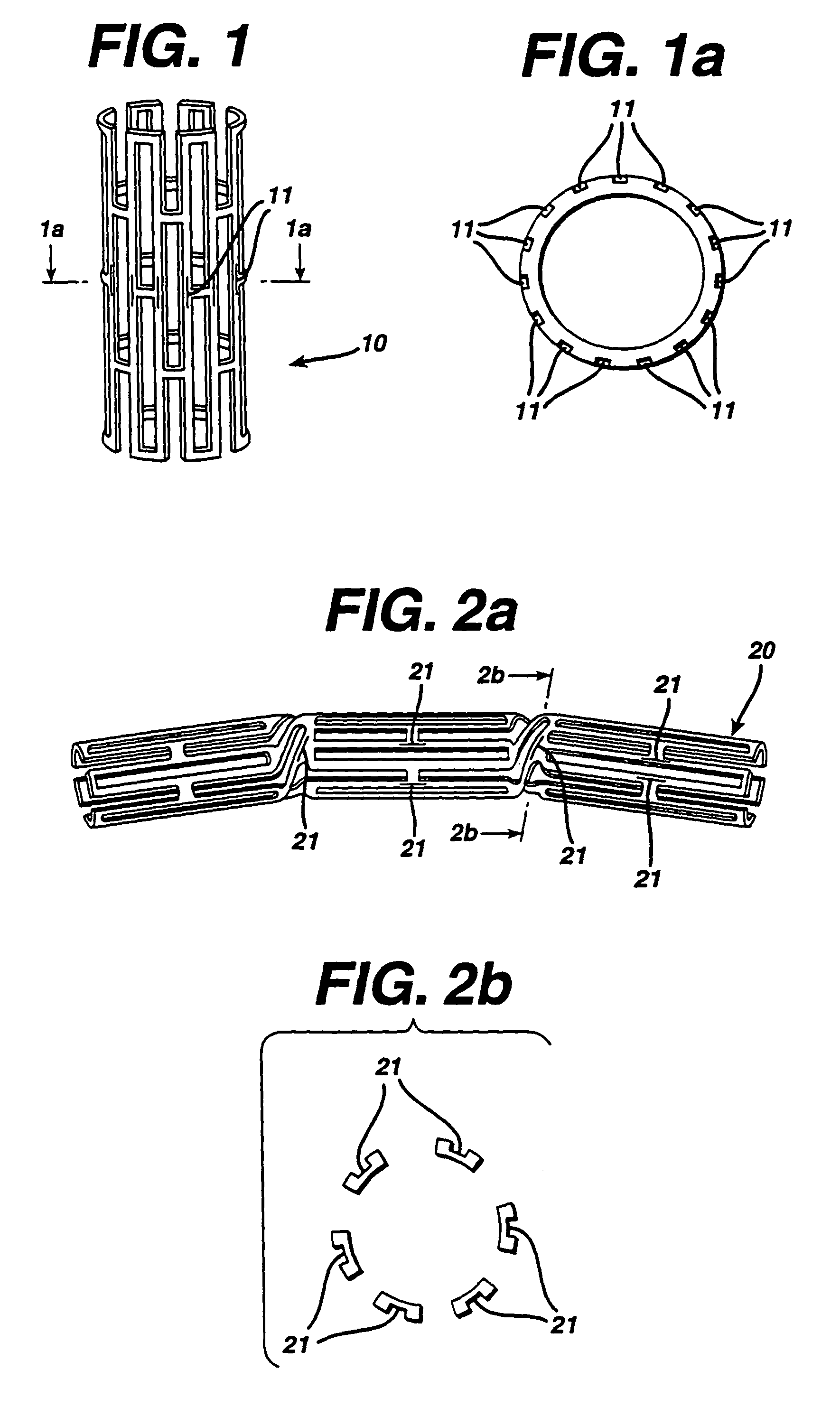Drug combination useful for prevention of restenosis
a technology of restnosis and drug combination, which is applied in the direction of blood vessels, prostheses, drug compositions, etc., can solve the problems of significant restnosis, post-ptca closure of the vessel, and 500,000-600,000 deaths annually, so as to reduce inflammation, improve the therapeutic effect, and reduce the proliferation
- Summary
- Abstract
- Description
- Claims
- Application Information
AI Technical Summary
Benefits of technology
Problems solved by technology
Method used
Image
Examples
example 2
[0039]This example describes the preparation of a base coating that contains rapamycin
[0040]Stents were coated with Parylene C™ using a vapor deposition method provided by the manufacturer of the parylene-coating instrument (SCS Madison, Wis.). The stent is weighed and then mounted for coating. While the stent is rotating a solution of 1.75 mg / ml Poly (ethylene-covinyl acetate)(PEVA), 1.75 mg / ml polybutyl methacrylate, and 1.5 mg / ml rapamycin dissolved in tetrahydrofuran is sprayed onto it. The coated stent is removed from the spray and allowed to air-dry. After a final weighing the amount of coating on the stent is determined.
example 3
[0041]This example describes the preparation of a base coating that contains dexamethasone
[0042]Stents were coated with Parylene C™ using a vapor deposition method provided by the manufacturer of the parylene-coating instrument (SCS Madison, Wis.). The stent is weighed and then mounted for coating. While the stent is rotating a solution of 1.75 mg / ml Poly (ethylene-co-vinyl acetate)(PEVA), 1.75 mg / ml polybutyl methacrylate, and 1.5 mg / ml dexamethasone dissolved in tetrahydrofuran is sprayed onto it. The coated stent is removed from the spray and allowed to air-dry. After a final weighing the amount of coating on the stent is determined.
example 4
[0043]This example describes the preparation of a base coating that contains rapamycin and dexamethasone
[0044]Stents were coated with Parylene C™ using a vapor deposition method provided by the manufacturer of the parylene-coating instrument (SCS Madison, Wis.). The stent is weighed and then mounted for coating. While the stent is rotating a solution of 1.75 mg / ml Poly (ethylene-co-vinyl acetate)(PEVA), 1.75 mg / ml polybutyl methacrylate, 0.75 mg / ml rapamycin and 0.75 mg / ml dexamethasone dissolved in tetrahydrofuran is sprayed onto it. The coated stent is removed from the spray and allowed to air-dry. After a final weighing the amount of coating on the stent is determined.
PUM
| Property | Measurement | Unit |
|---|---|---|
| time | aaaaa | aaaaa |
| length | aaaaa | aaaaa |
| size | aaaaa | aaaaa |
Abstract
Description
Claims
Application Information
 Login to View More
Login to View More - R&D
- Intellectual Property
- Life Sciences
- Materials
- Tech Scout
- Unparalleled Data Quality
- Higher Quality Content
- 60% Fewer Hallucinations
Browse by: Latest US Patents, China's latest patents, Technical Efficacy Thesaurus, Application Domain, Technology Topic, Popular Technical Reports.
© 2025 PatSnap. All rights reserved.Legal|Privacy policy|Modern Slavery Act Transparency Statement|Sitemap|About US| Contact US: help@patsnap.com



